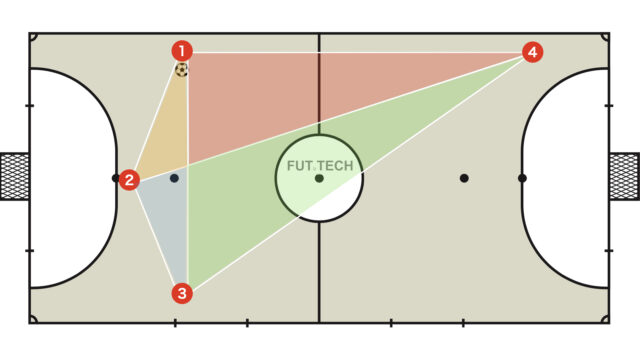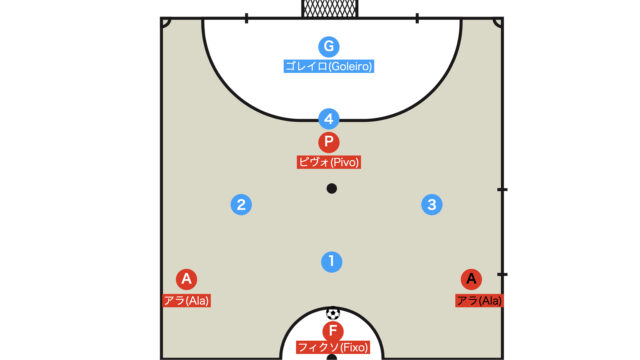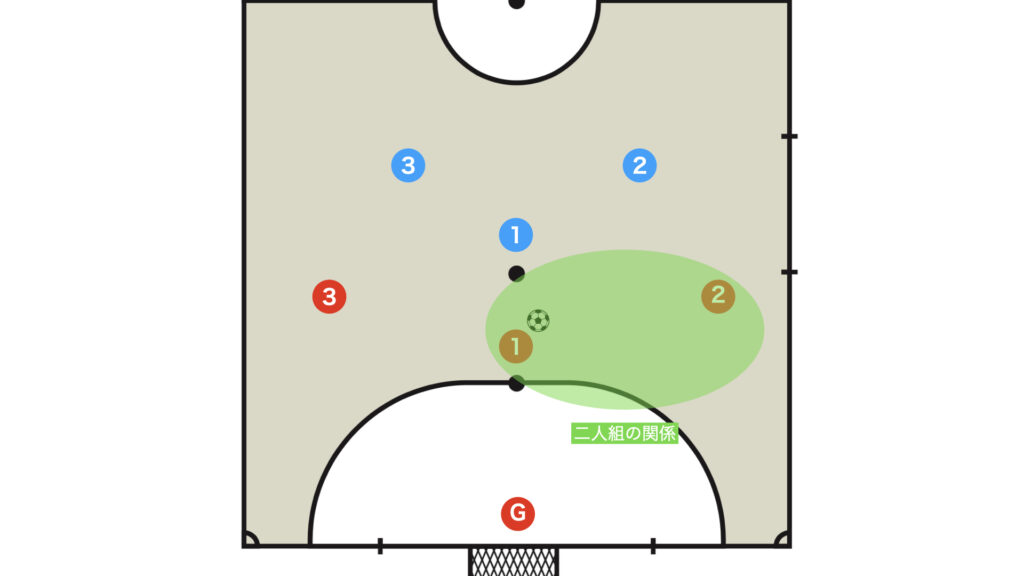
In futsal, the duo relationship refers to the strategy in which two players work together to break through a situation, emphasizing the interdependence between the two.
Although there are four field players on a futsal court, the team’s group tactics can be considered as a collection of duo relationships.
Therefore, the duo is the most fundamental tactic, and it is indispensable when discussing futsal strategy.
The quality of a positional attack tends to depend heavily on the quality of the duo relationship, and even at the top level, many teams place great emphasis on the quality of their duo.
There are various duo relationships, such as between pivo and ala, but this article deals with the short, lateral duo relationship between ala and fixo.
The duo relationship is determined by “the distance with the teammate (short or long) × the angle (lateral or vertical).” In the case of the relationship between ala and fixo, four types can be identified: short lateral, long lateral, short vertical, and long vertical. Alternatively, one may also categorize movements at approximately a 45-degree angle as a separate diagonal category.
One can also consider the duo relationship between the goal keeper (goleiro) and the field player (FP). This duo is particularly important during clearances. In teams where the goal keeper actively participates in the attack, it is essential for the goal keeper to fully understand the duo relationship. In European teams, there are even rare instances where the goal keeper and FP execute a one-two to score a goal.
- Fundamental Knowledge for Understanding the Duo Relationship
- The Close (fixo) – Distant (ala) Relationship
- When the Ball Carrier (ala) is Pressed
- The Distant (fixo) – Close (ala) Relationship: Ala’s Tactical Play
- The Close (fixo) – Close (ala) Relationship
- The Distant (fixo) – Distant (ala) Relationship
- Training Menu
- Summary
Fundamental Knowledge for Understanding the Duo Relationship
As mentioned at the outset, the duo relationship refers to the scenario where two players work together to overcome an obstacle.
First, let us introduce two key points necessary for understanding the duo relationship.
① The Workflow for Attacking the Backdoor
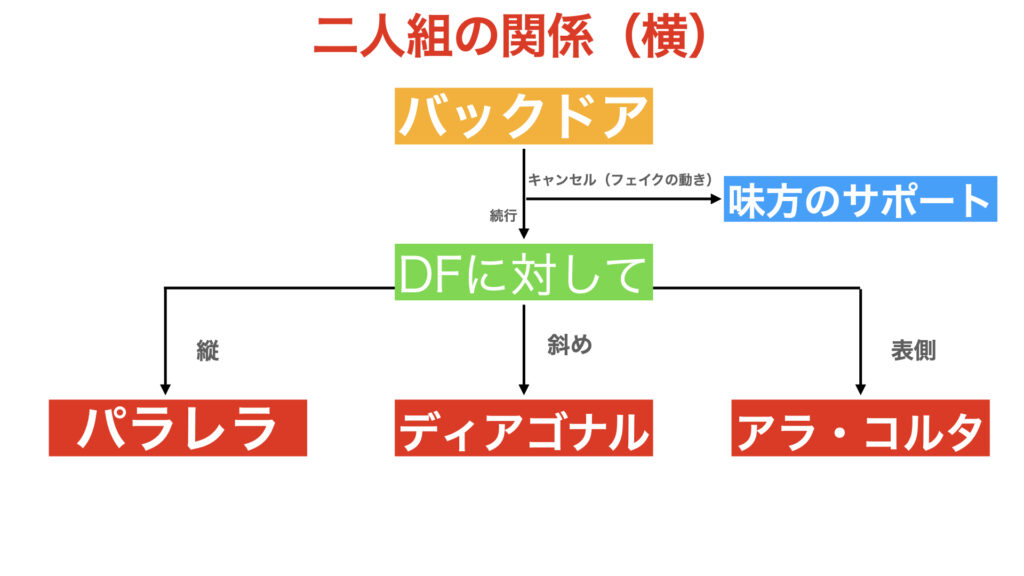
It goes without saying that to change the situation, the ball must be advanced.
Within a duo, the only way to push the ball forward is for one of the players to attempt a backdoor run (getting behind the opponent).
There are several ways to move when targeting the backdoor. This is illustrated by the branching workflow shown in the diagram above.
In a duo, the aim is for the receiver to create a numerical advantage by engaging in a tactical exchange with the opposing defender, which means the receiver takes the initiative while the passer must be adept at reading the receiver’s intentions.
② Classification of Duo Relationships
This article focuses on the short lateral duo formed by ala and fixo.
Considering the position of the opposing defenders, there are four possible situations that can arise from this duo relationship:
- Close (fixo) – Distant (ala)
- Distant (fixo) – Close (ala)
- Both close (fixo and ala)
- Both distant (fixo and ala)
This article provides a detailed explanation of the appropriate actions for each situation.
The Close (fixo) – Distant (ala) Relationship
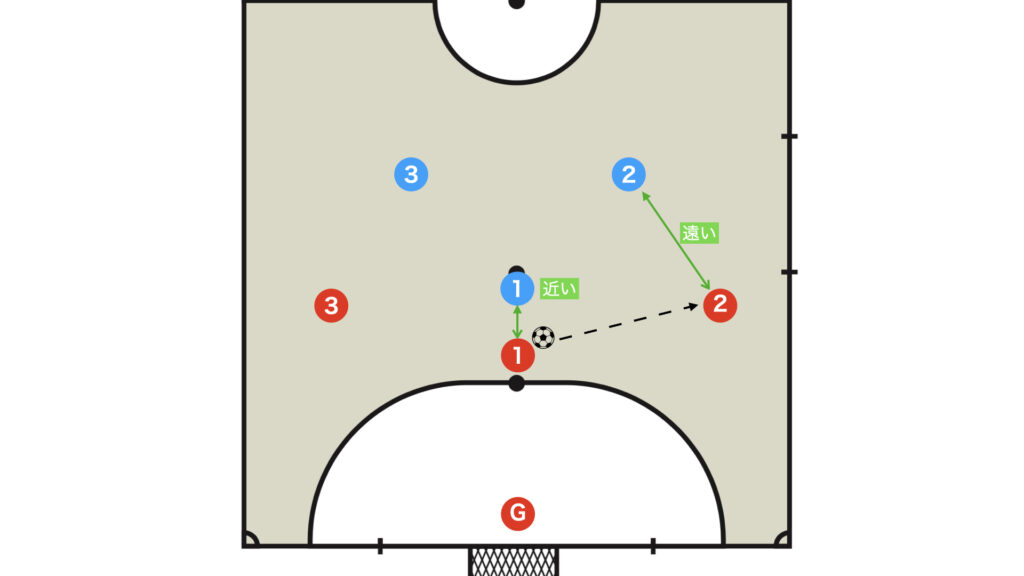
A scenario where fixo is pressed by the opposing defender and passes to ala.
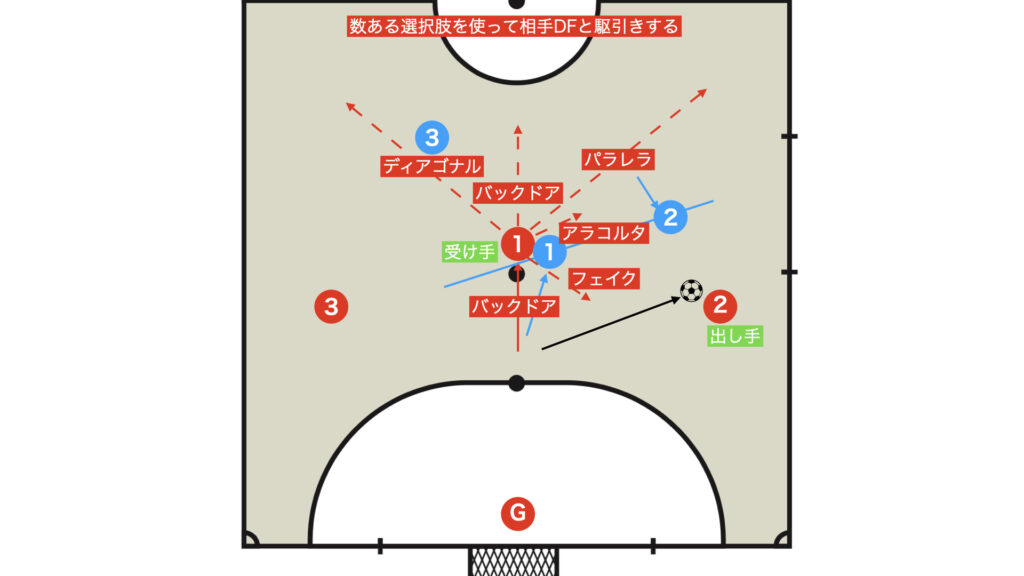
By taking advantage of the opponent’s press, one can aim for a backdoor run while keeping the aforementioned workflow in mind.
Paralela
Paralela is a Spanish term meaning “parallel,” referring to running parallel to the touchline.
It is also used as a general term for a duo relationship that breaks down the opposing defensive organization through this movement.
There are various types of paralela; a long paralela is called a long para and a short one a mini para.
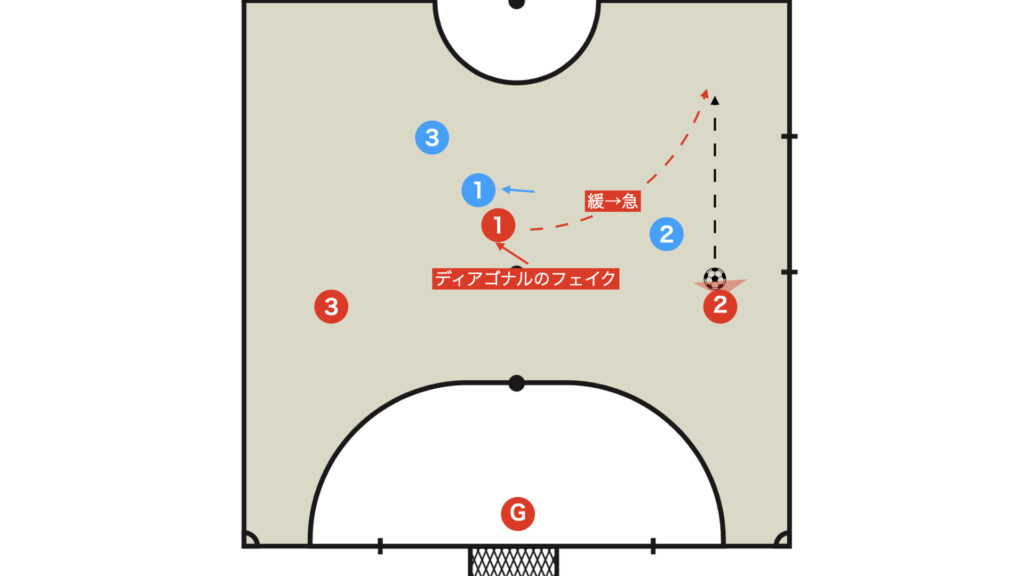
If the opposing defense is already out of position before the pass is made, one can run directly with a paralela. However, if the marker is still in place, it is crucial to use feints in a Diagonal manner or vary the pace to quickly shake off the opponent’s marking, as shown above.
When the Vertical Space is Open
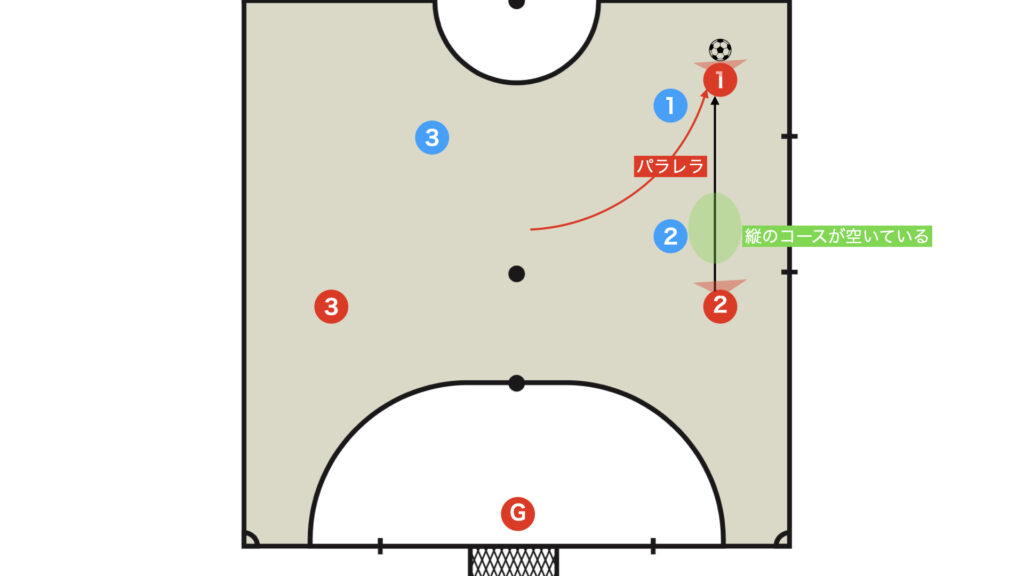
The conditions that must be met for a paralela duo to be effective are as follows:
- The vertical course of the passer is open.
- The receiver has managed to shake off the opponent’s marker.
If these two factors do not coincide, a paralela cannot be established. Moreover, attention must also be paid to the timing between the receiver and passer as well as the strength and trajectory of the pass, which makes this seemingly simple tactic extremely challenging.
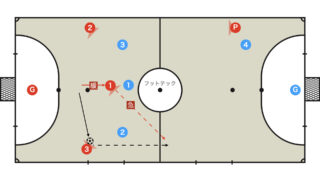
When the Vertical Space is Blocked
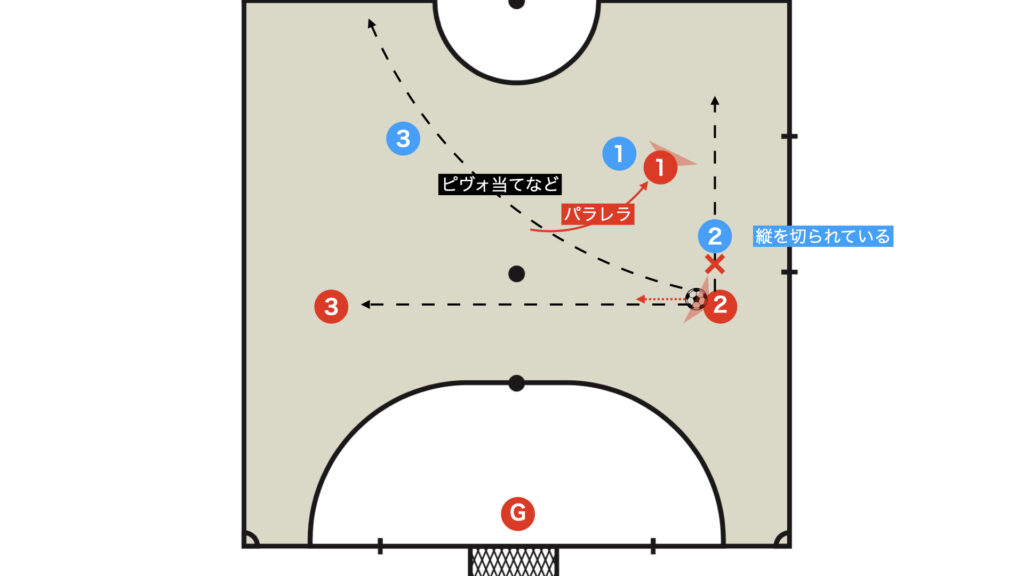
If you force a pass when the vertical course is cut off, there is a risk that the opponent will intercept the ball and launch a counter-attack.
In such cases, it is best to cancel the paralela and instead perform a short central dribble before aiming for a diagonal pass (either a backdoor or to pivo).
If you succeed in reaching pivo diagonally in this situation, the player who broke free with the paralela can function as the third man.
If a diagonal pass is not available either, a lateral pass to the red 3 is the safest option.
Diagonal (Slanted Movement)
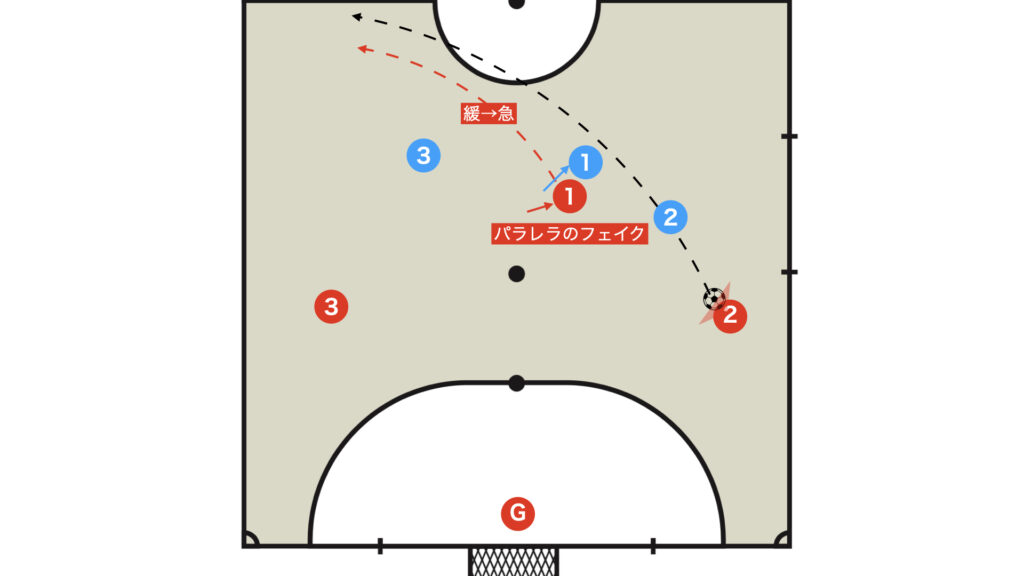
Diagonal (or “diagonal”) is a Portuguese term meaning “slanted movement.”
This term is used to describe the overall duo relationship that breaks down the opposing defensive organization through such slanted movement, as shown above.
As with paralela, if the opposing defense is out of position before the pass is made, one can run directly with a diagonal; however, if the marker is still on, it is crucial to use feints and changes of pace—as demonstrated above—to quickly shake off the opponent’s marking.
When the Diagonal Course is Open

The conditions for breaking through with a diagonal duo are as follows:
- The diagonal course is open for the passer.
- The receiver has managed to shake off the opponent’s marking.
Although a diagonal pass line can be secured using a fly pass (loop), compared to a paralela the pass is longer and the receiver often finds it more difficult to control the ball due to body positioning. Therefore, while the conditions for a diagonal are easier to achieve, linking it to a finish is not as simple.

When the Diagonal Course is Blocked
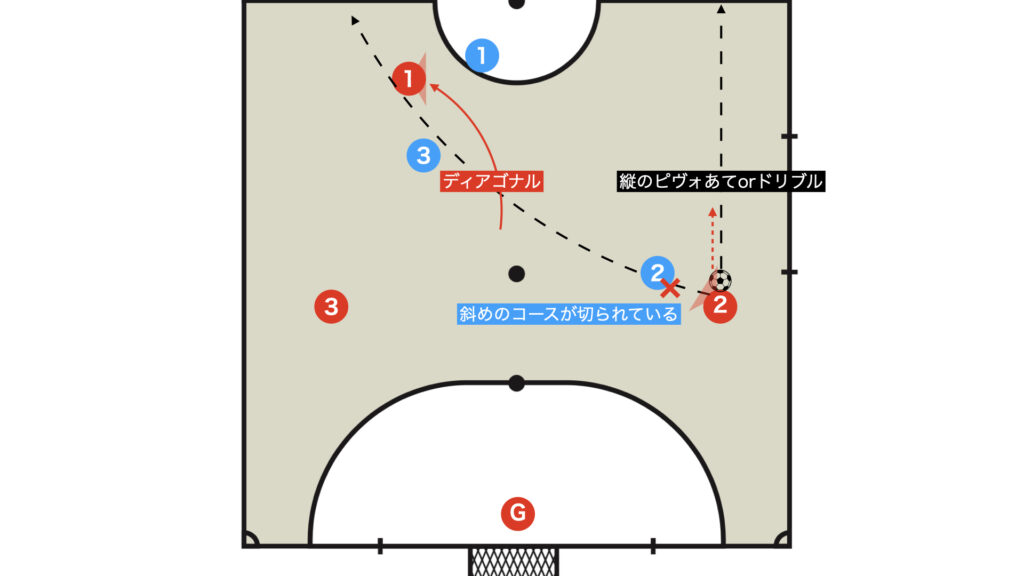
If the diagonal course is clearly cut off, a vertical space opens up so that one can either pass to pivo or advance by dribbling.
In such cases, if a diagonal pass is not available, employing the individual tactic known as contrapie can help to break down the defense smoothly.
Go & Stop (Pivot)
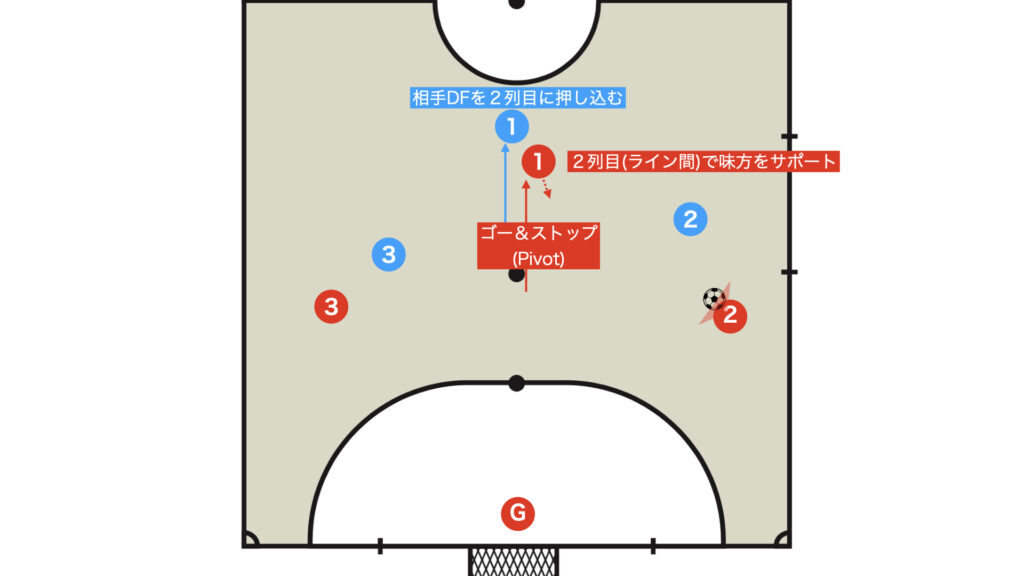
When a backdoor run is attempted but the opposing defender follows, the ball carrier may opt to stop and call for the ball.
This tactic aims both to force the opponent’s defense into the second line and to exploit the spaces between the lines.
When Ala is Pressed: Lateral Support
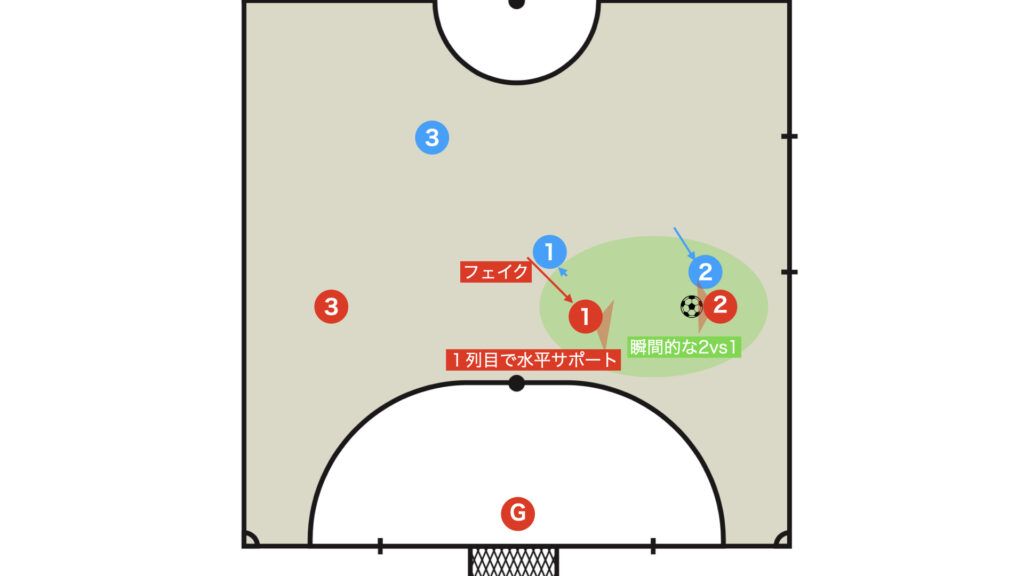
In the situation where ala is pressed, as will be explained later in the “Distant (fixo) – Close (ala)” section, if the ball carrier is under pressure and breaks free, the pass may not be received. Therefore, it is best to cancel the backdoor run and switch to lateral support.
This movement is commonly known as a feint.
When the Ball Carrier (ala) is Pressed
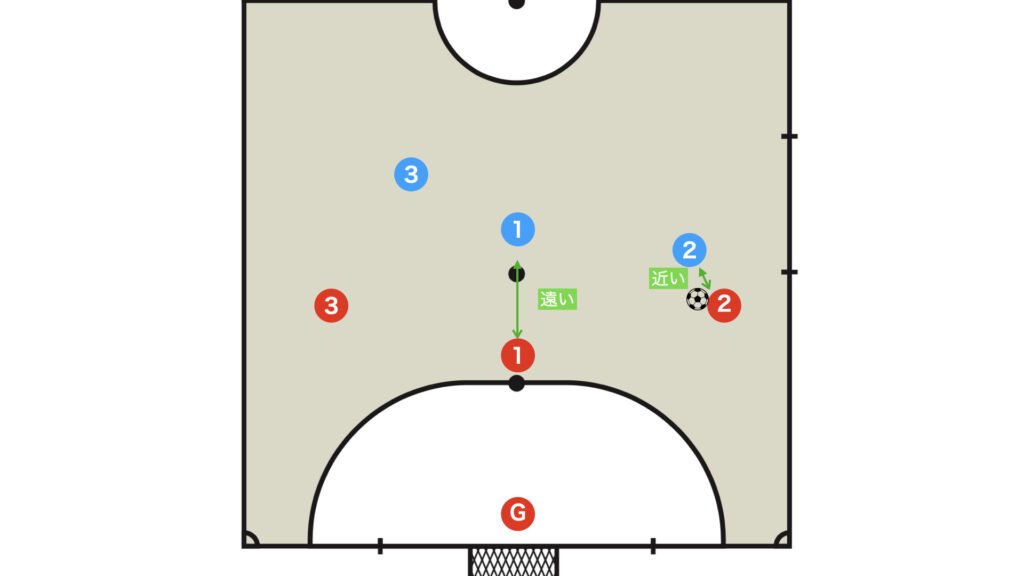
When fixo is relatively distant from the opposing defender while ala is close, fixo should opt not to break free but to support the ball carrier.
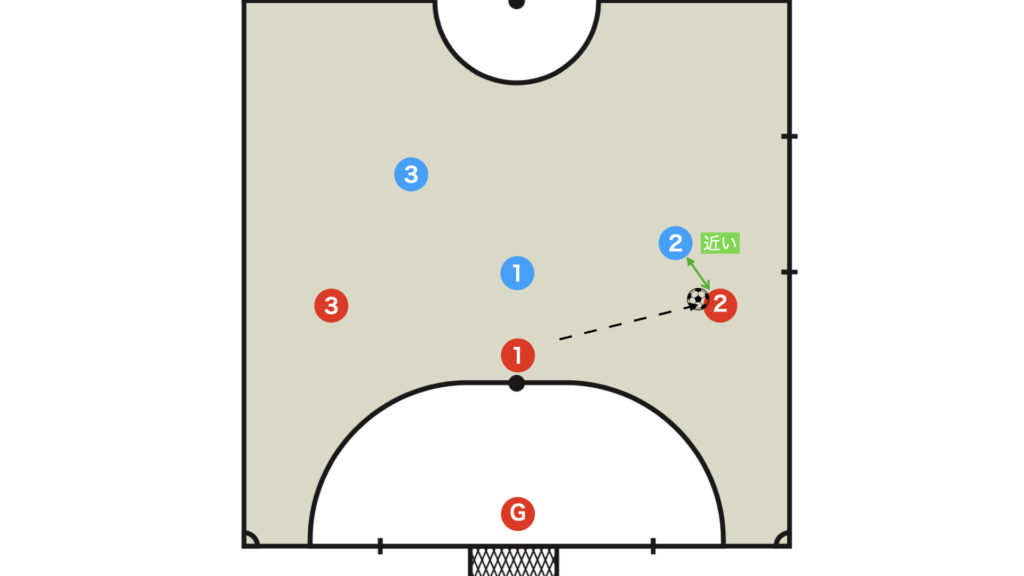
This is a common pattern when a pass is made from fixo to ala.
A Poor Example: Breaking Free Unnecessarily
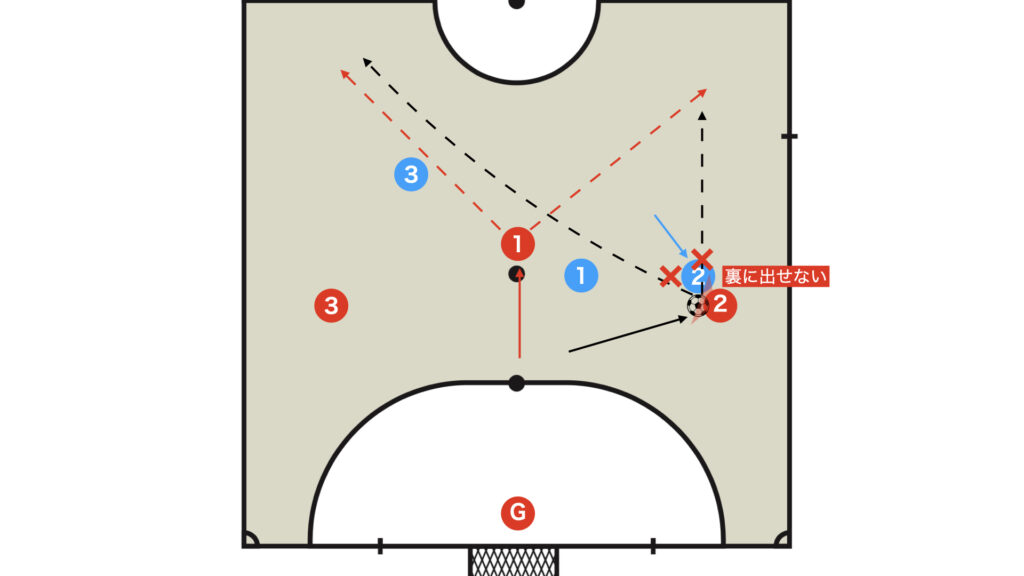
If a player breaks free despite the ball carrier being pressed, the passing lane behind is cut off, leaving the ball carrier isolated.
This is a common poor example seen among futsal beginners, and is typical of players (or teams) who blindly attempt to break free.
Lateral Support
One-Two
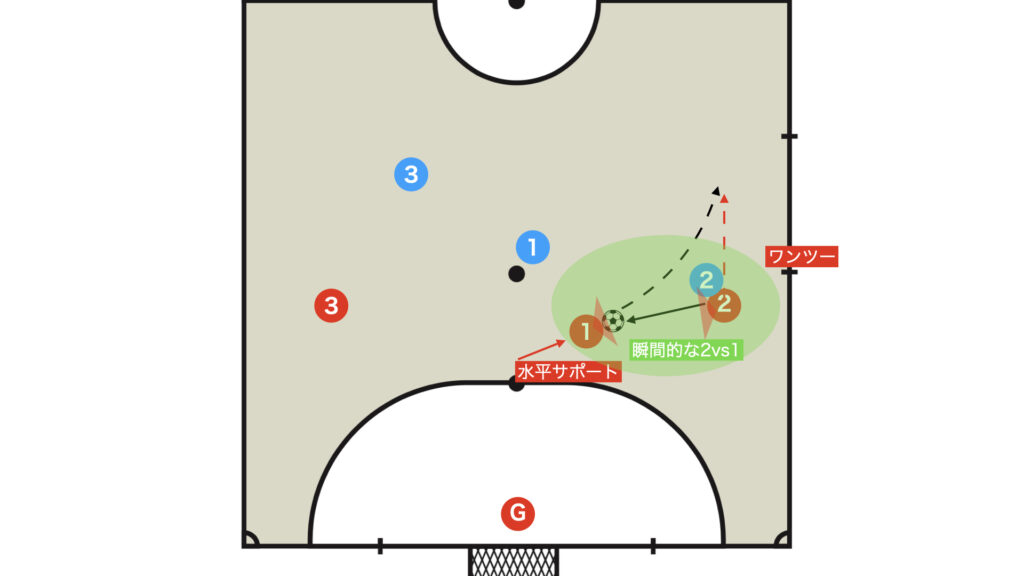
By providing support at the same level—or slightly behind—the ball carrier, you can receive the ball and, taking advantage of the press, aim for a backdoor run.
This type of breakdown is commonly referred to as a one-two.
Cancel

Instead of blindly running for the backdoor, if the opponent is following, ala should cancel and reposition to receive the ball at their feet.
Fixo Attacks the Backdoor → Central One-Two
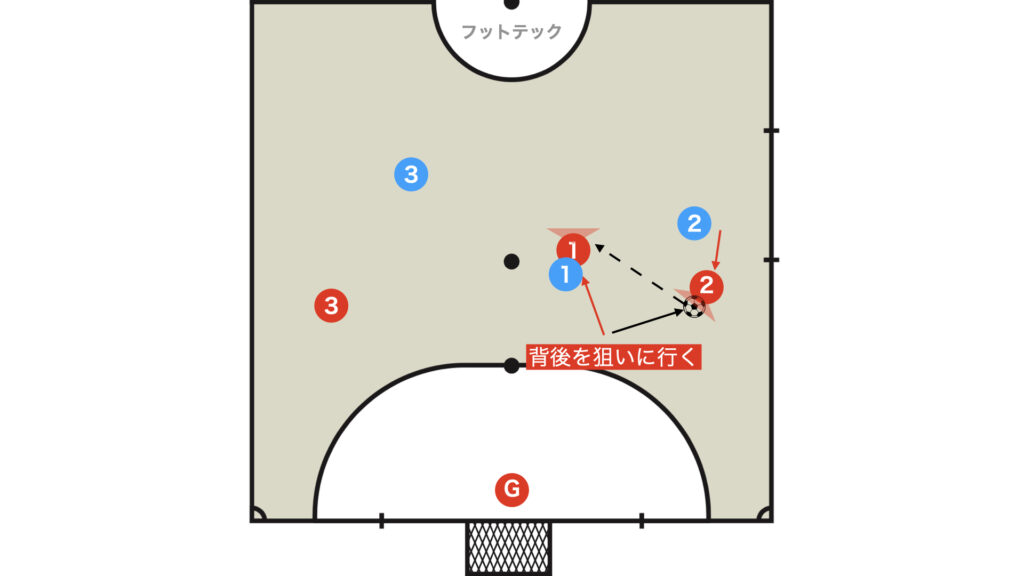
If the opposing defender is caught on fixo, fixo should then move to attack the backdoor.
This continuous one-two feint and pass exchange between the two players in the center lane is referred to as dualidad (duality).
Dualidad means “duality.”
Supporting the Ball Carrier’s Central Dribble
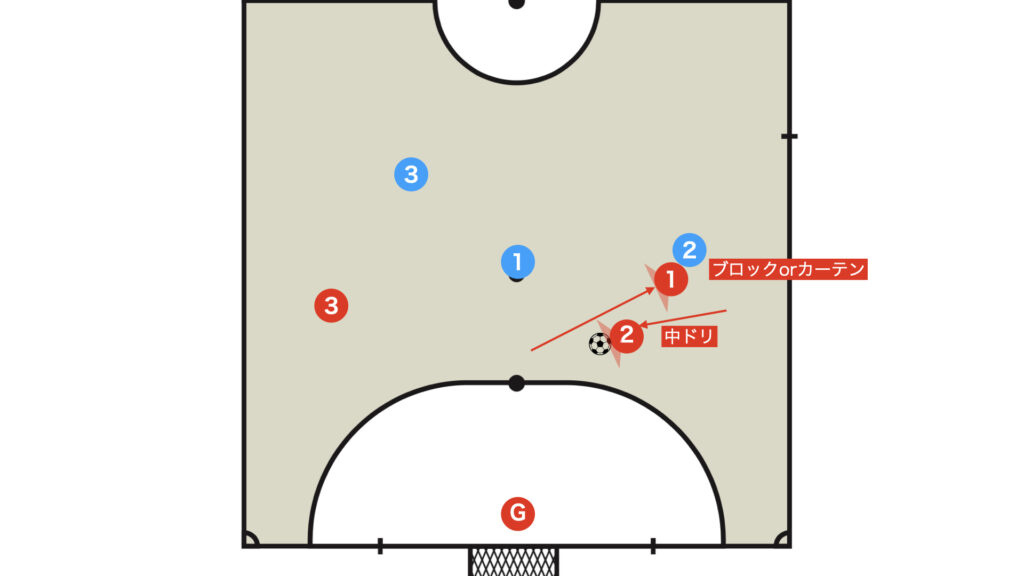
There are two methods for supporting the ball carrier during a central dribble: block and curtain.
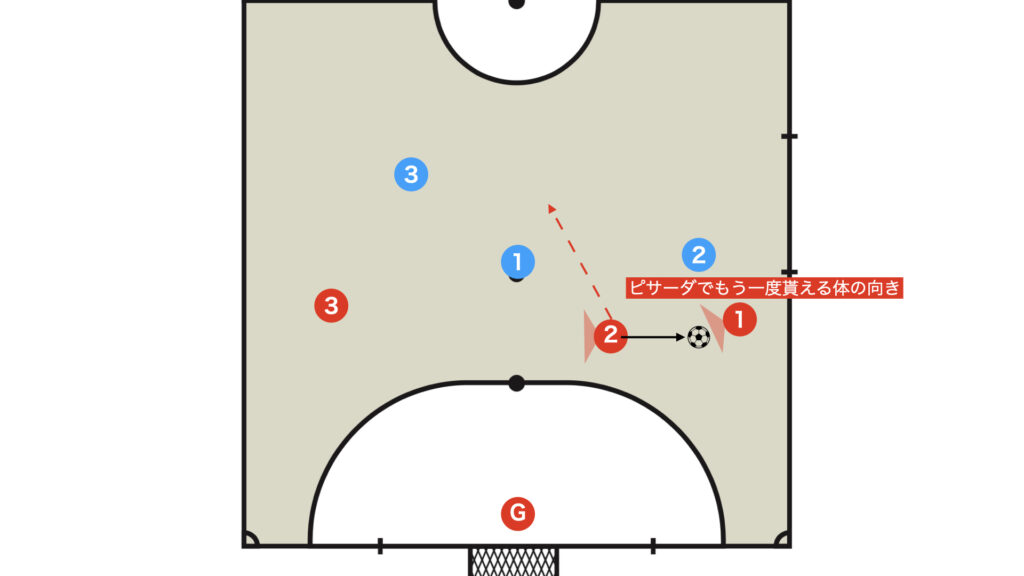
When executing a block or curtain, always turn your back to the touchline and support by keeping an eye on the entire court.
This positioning allows the ball to be received again via pisada.
Block

A block is an action where you position yourself in the path of the opposing defender to hinder them, thereby supporting your teammate.
Curtain
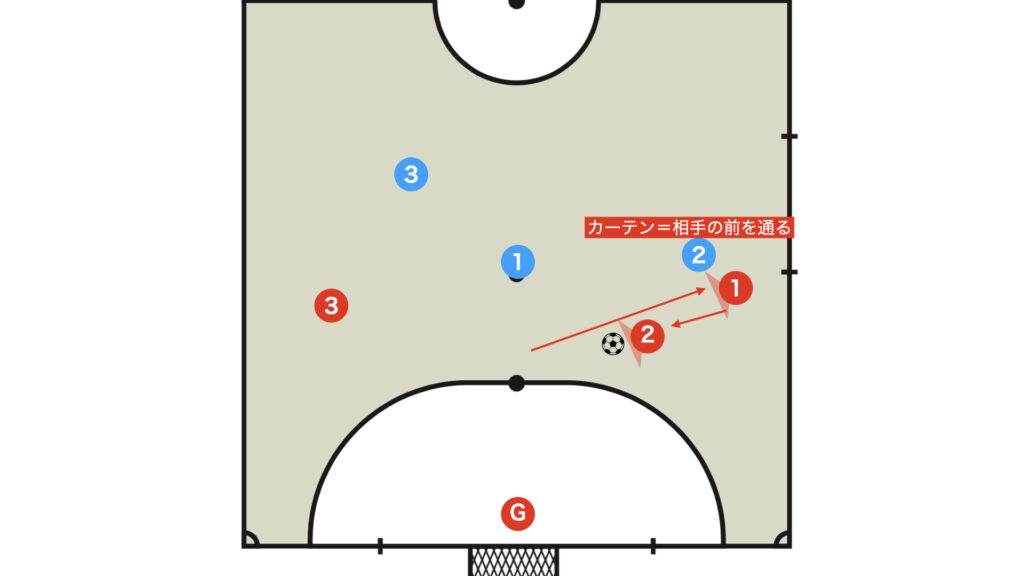
A curtain is when you move between your teammate and the opposing defender to temporarily reduce the pressure on your teammate.

The Distant (fixo) – Close (ala) Relationship: Ala’s Tactical Play
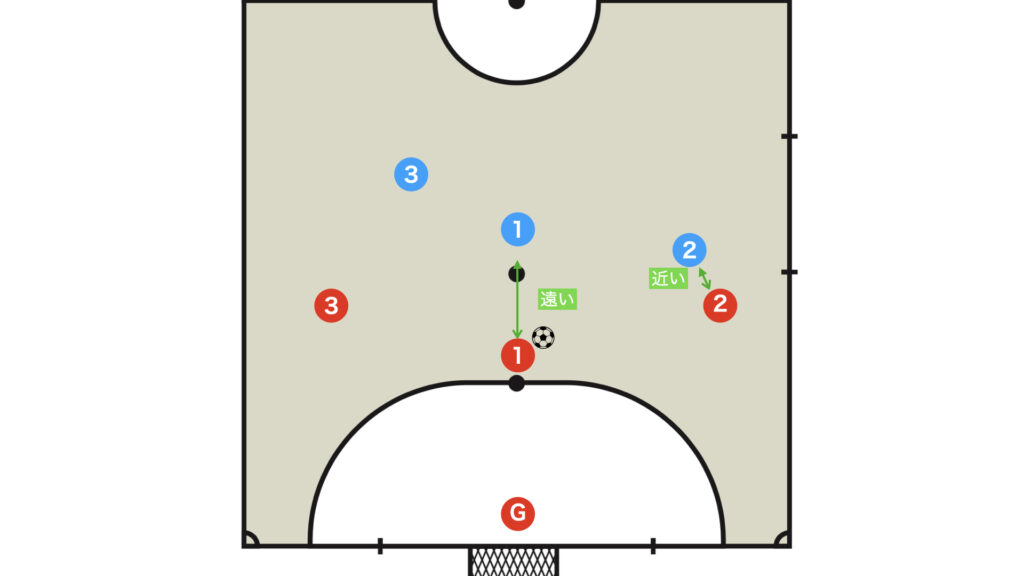
As in the case of the “Distant (ala) – Close (fixo)” scenario, ala will look to make a backdoor run.
Such tactical feints, where ala positions high to target the backdoor, are often employed in the opponent’s half rather than in one’s own half.
For further details, please refer to the article below.
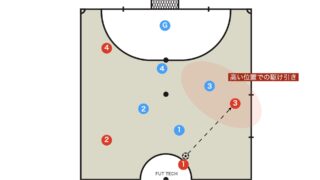
The Close (fixo) – Close (ala) Relationship
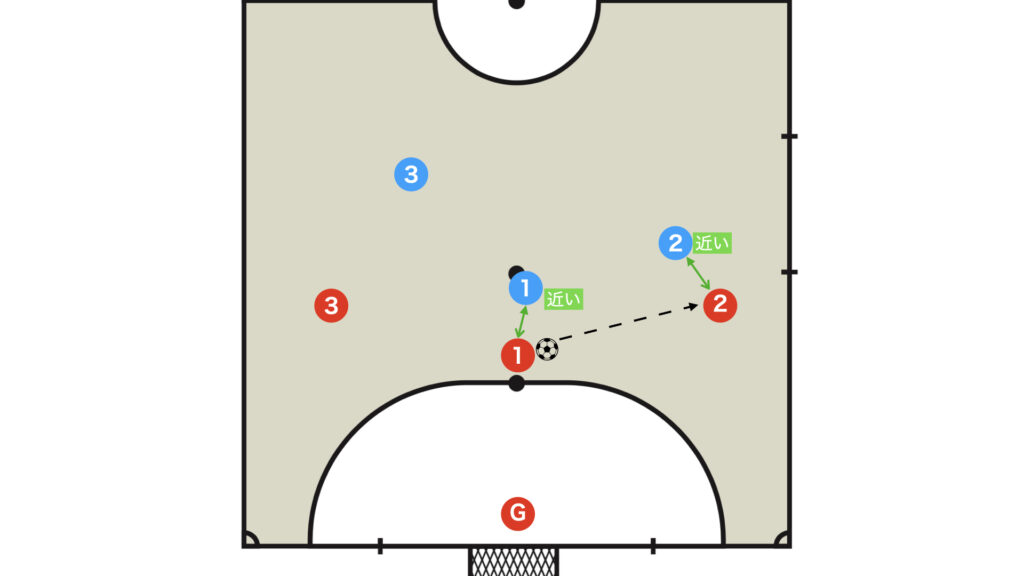
The image above shows a situation where both the receiver and the passer (ala and fixo) are tightly marked by the opposing defenders, resulting in a complete press.
A Poor Example: Bringing One’s Own Marker Along
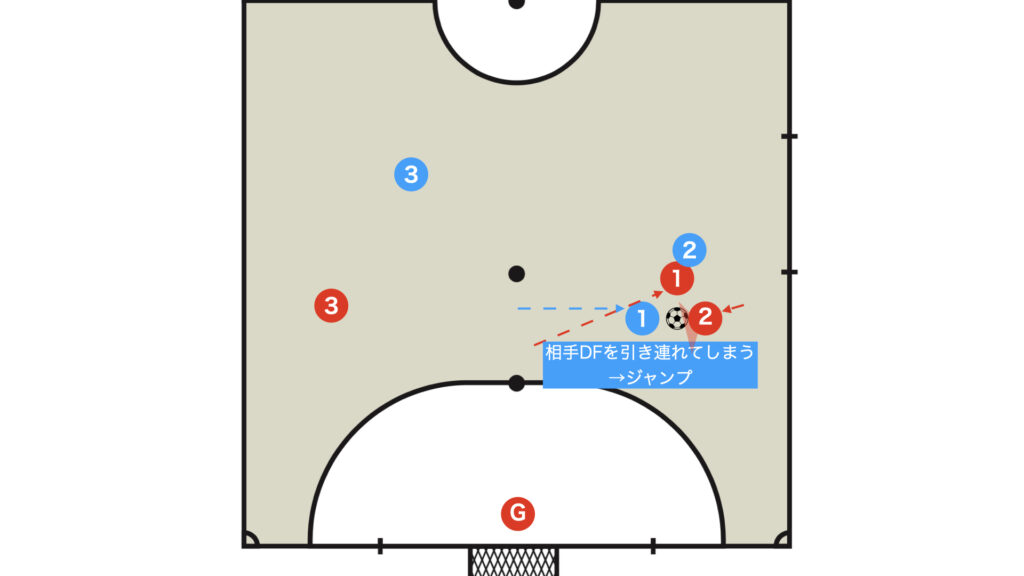
This is a common poor example seen in players who blindly attempt a block or curtain, inadvertently dragging their own marker along.
When, in such tightly marked situations, a player moves too close to a teammate, it can result in a jump (marker exchange) by the opposing defender, leading to a loss of the ball.
Breaking Free
Although the likelihood of directly receiving the ball is low, if the player manages to draw the opposing defender, a lateral passing lane can open up.
Conversely, if a player fails to draw the opponent and remains marked, the ball carrier risks being isolated.
Lateral Pass
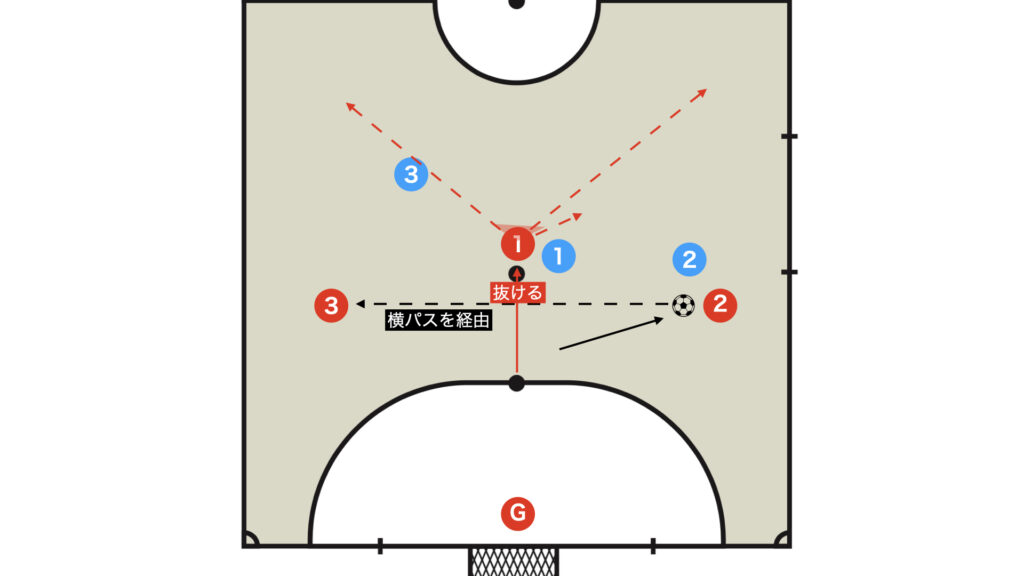
This involves utilizing the passing lane that opens up when the opposing defender is drawn away.
Third Man Movement
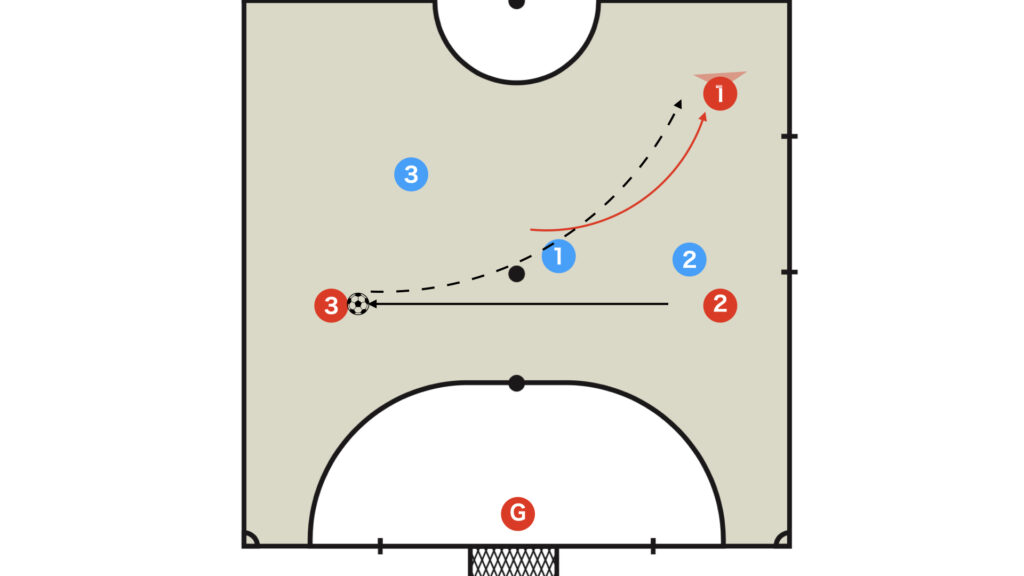
If the lateral pass finds its mark, the first player who broke free (red 1) can serve as the third man.
Supporting Through the Gap (Entreriliness)

As a last-ditch effort, there is a solution whereby a player can step out from the gap between the two defenders (DFs) and receive the ball between the defensive lines.
If the pass through the gap is intercepted, the counter-attack could be disastrous; however, if successful, it creates a great opportunity.
The ball carrier should dribble slightly inward to secure a passing lane and execute an ankle pass.
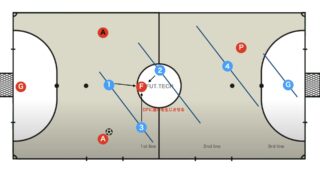
Feint: Transitioning from Close to Distant
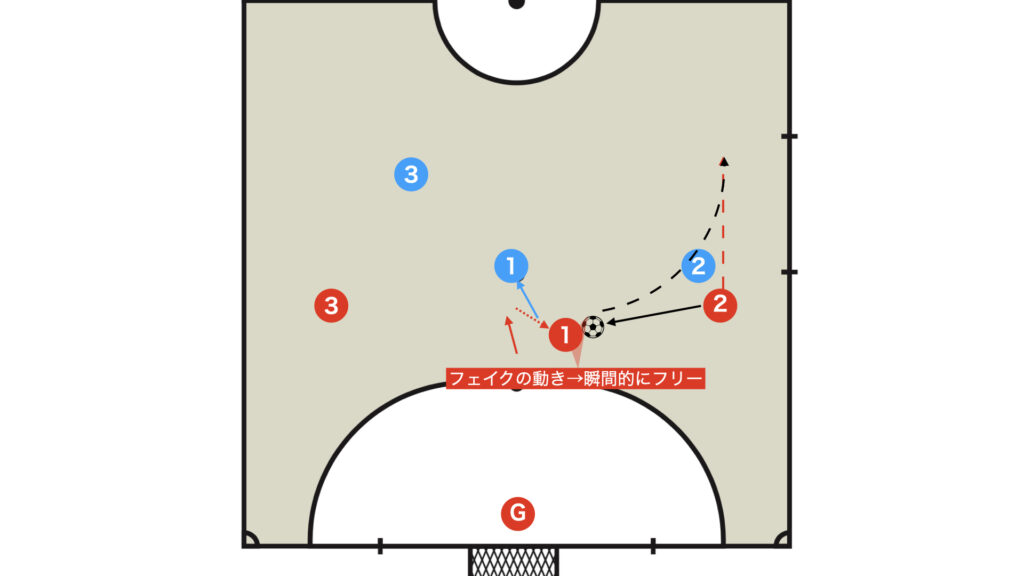
By taking a step before receiving the ball again at your feet, you can momentarily create space by drawing the opponent away.
This enables a simple one-two to be attempted.
However, if the opposing defender is not deceived by the feint, the action becomes ineffective.
When the Opponent’s Defense Tends to Play a Zonal System: Negative Support
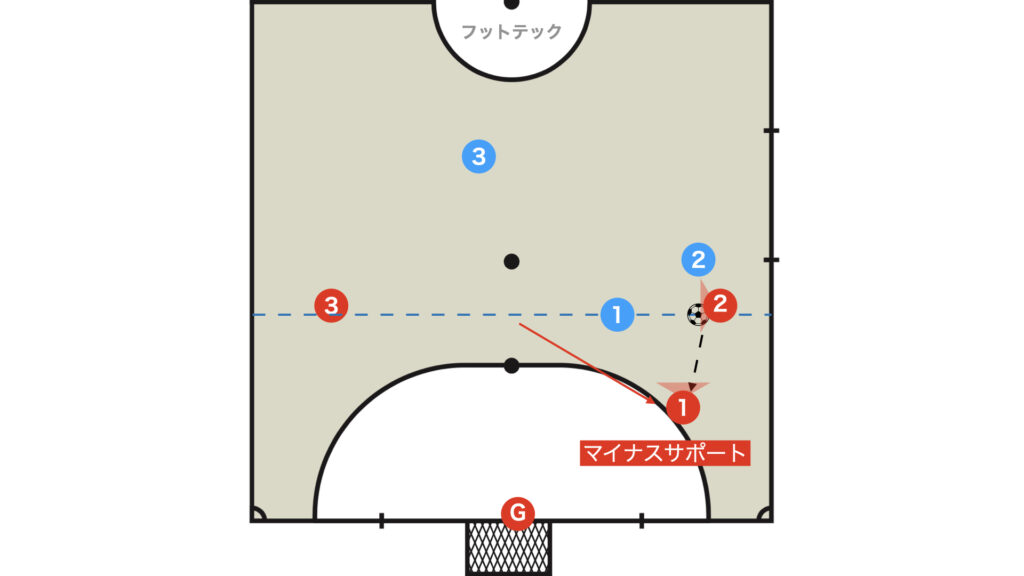
If the opponent’s 2nd defender (blue 1) adopts a tactic where they do not step forward past the ball line, negative support can secure the passing lane.
When employing tactics that form multiple defensive lines (the defensive triangle), the 3rd defender floats to cover, so to prevent long passes (ala-ala), it is common to pull the 2ndDF back to the ball line to counteract such passes.
A Poor Example: Negative Support Against a Man-to-Man Defense
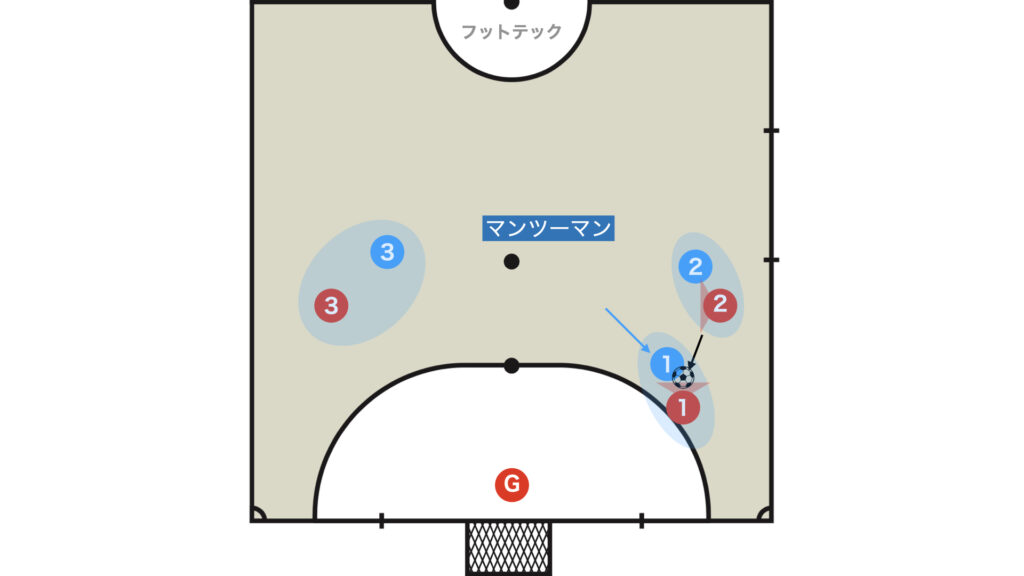
If the opponent is playing a man-to-man defense, negative support will be ineffective if the marking remains unchanged.
It is important to make decisions based on the characteristics of the opponent’s defense rather than playing blindly.
Vertical Duo Relationship

When two players enter the same lane, which is approximately 5 meters wide, the strategy shifts to that of a short vertical duo relationship.
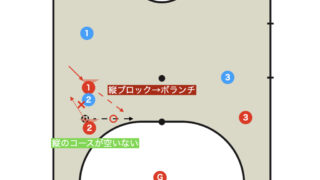
There are two patterns: the short vertical duo (ala-fixo) and the long vertical duo (fixo-pivo). The long vertical duo is an indispensable group tactic for teams that employ pivo.
The Distant (fixo) – Distant (ala) Relationship
Fixo as the Receiver
Drawing the Opponent In Deliberately Before Breaking Free
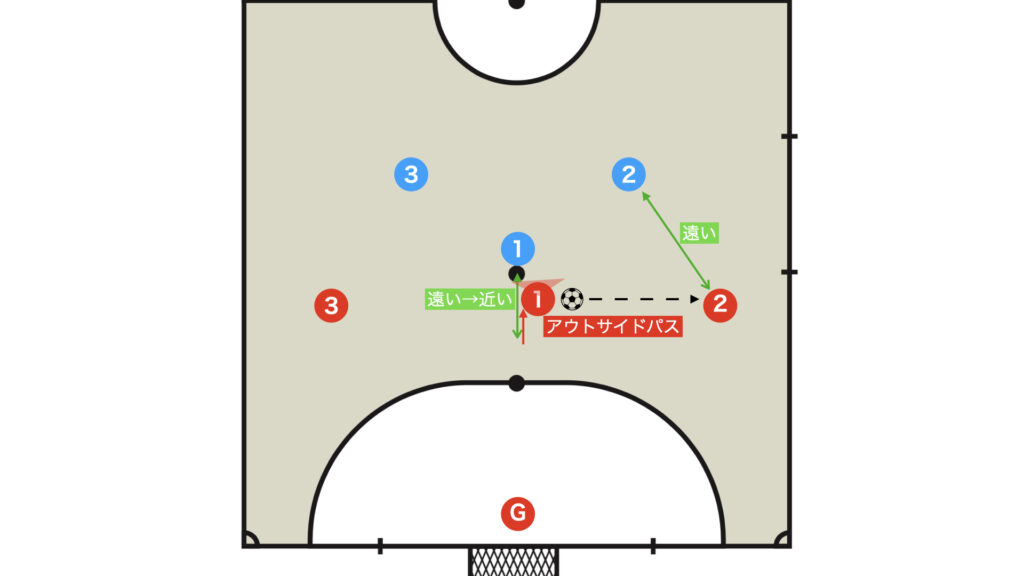
By deliberately attracting the opponent before breaking free, you can take advantage of the press to target the backdoor.
When the opponent is drawn in to the extreme before passing, an outside pass or pisada is effective.
Passing First, Then Drawing the Opponent In

After making a pass, run toward the opponent and engage in tactical feints to target the backdoor.
This is the most common pattern seen in futsal.
Ala’s Tactical Feints
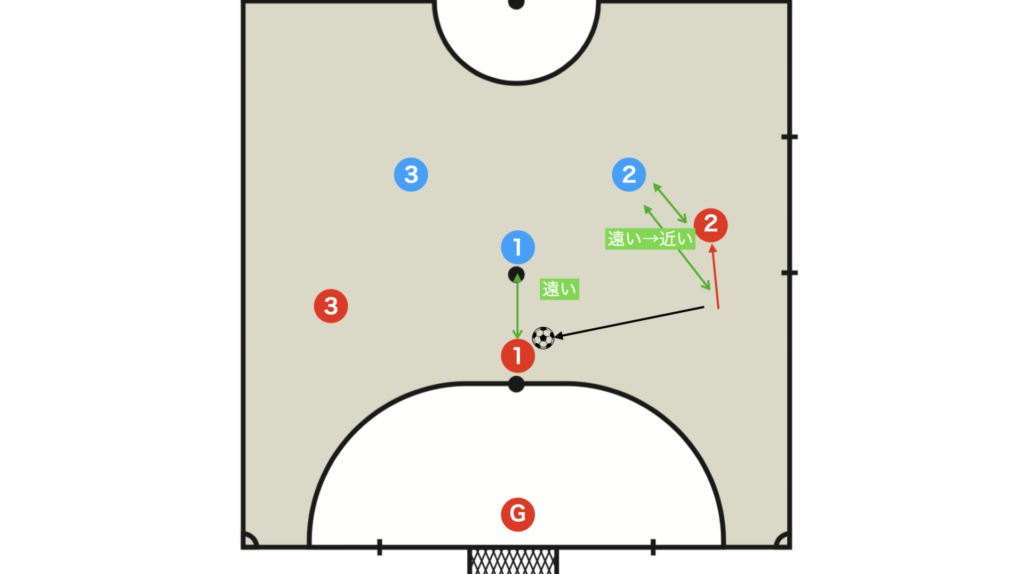
Ala can also operate from an advanced position, engaging in feints from a higher level.
Training Menu
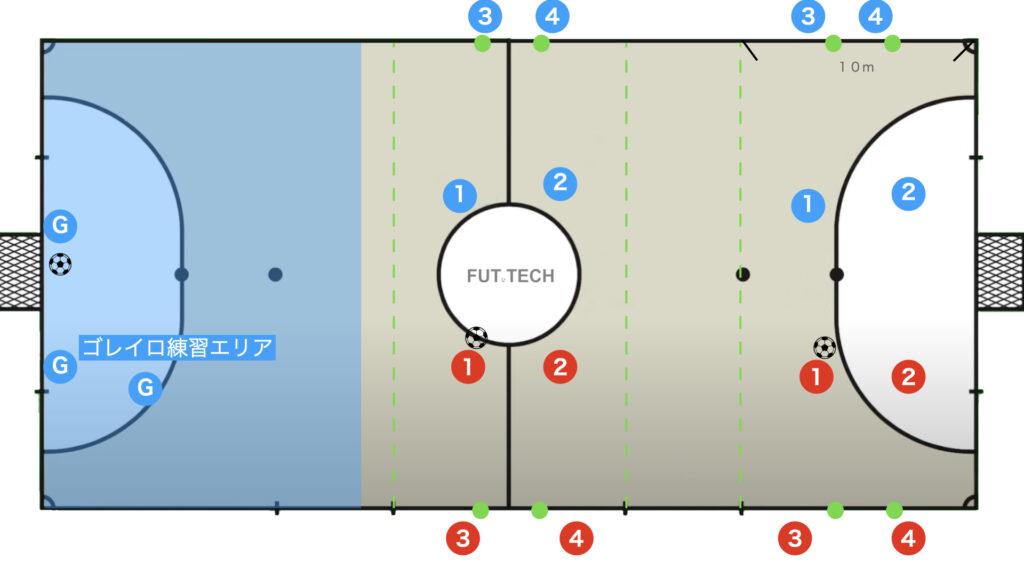
- Create several elongated courts measuring 10m x 20m.
- Use markers to set up goals; once a goal is scored, the player remains in the goal area.
- If a goal is conceded, the player performs a dribble in to allow a new duo to form.
- Focus on the duo relationship.
- Always target the goal as if it were pivo during the match.
- Defensively, cut off the passing lanes leading to the goal (pivo).
This training session is recommended during the goal keeper’s warm-up as it does not require a goal keeper.
Summary
In futsal, the duo relationship arises in every phase of the game and is therefore extremely important.
When it comes to duo relationships, you begin by considering the distance between your teammates and the opponent, recognizing the following four scenarios:
- The passer is close to the opponent’s defender while the receiver is distant.
- The passer is distant from the opponent’s defender while the receiver is close.
- Both the passer and the receiver are close to the opponent’s defender.
- Both the passer and the receiver are distant from the opponent’s defender.
By choosing the appropriate play for each situation, there is no doubt that your futsal skills will improve.
Thank you very much for reading this article to the end.
If you found this article useful, please consider sharing it using the social media share buttons above.
We regularly share valuable insights on futsal tactics on Twitter, so if you haven’t followed us yet, we’d appreciate your support!
We are committed to raising the level of futsal in Japan by sharing high-quality information through discussions with individuals who have coaching experience in the F.League and overseas.
If you have any questions or notice any mistakes, feel free to leave a comment below.
We update our articles regularly, so if you’d like to keep reading, please bookmark our site or search for “FutTech”!
